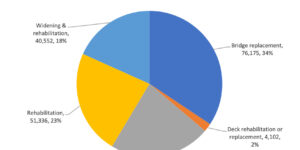A local power failure in Ohio ten years ago caused a series of cascading power failures that resulted in a massive blackout that affected 50 million people and caused billions of dollars in damage and lost revenue.
Such blackouts could be prevented in the future, thanks to a new piece of equipment developed by engineering researchers at the University of Arkansas. The device regulates or limits the amount of excess current that moves through the power grid when a surge occurs.
“We didn’t invent the fault current limiter,” said Alan Mantooth, Distinguished Professor and executive director of the National Center for Reliable Electric Power Transmission, based at the university. “But we have developed the first one using a silicon-carbide semiconductor device and technology, which we have developed over the past five years. The significance of this material cannot be overestimated. It is much more durable and responds so much faster than materials currently used in systems on the U.S. power grid.”
A fault current, also known as a surge, occurs when too much current flows through the electrical power grid in an uncontrolled manner. A fault current is typically caused by an accident or unintended event, such as lightning or contact between power lines and trees. These events cause short-circuits, which result in a rapid increase in the electricity drawn from power sources within the grid.
When these sources do not have extra power to give, cascading or rolling blackouts can occur. This is what happened in Ohio, much of the northeast United States and parts of Canada in 2003.
A fault current limiter can be thought of as a giant surge protector. When excess current travels through a power line, the limiter absorbs it and then sends only what is necessary farther down the line, Mantooth said. The system thus ensures uninterrupted service when the fault is intermittent. Most consumers would not even detect a problem. Furthermore, if the fault is more permanent and will require repair to power lines, Mantooth said, the device then opens much like a normal circuit breaker, which would thus prevent further damage due to excess current.
Proper coordination and device placement will prevent cascading outages, he said.
“This device really can mean the difference between 25,000 customers or 5 million customers being affected,” Mantooth said.
The U of A researchers worked with silicon-carbide, a semiconducting material that is stronger and faster than conventional materials used in the power grid. High-speed switching devices within the limiter rapidly insert energy-absorbing impedance into the circuit or use advanced control techniques to limit the fault current, Mantooth said.
Silicon-carbide has other benefits as well. Its properties allow for extremely high voltage, and it is a good thermal conductor, which means that it can operate at high temperatures without requiring extra equipment to remove heat. Overall, use of the material will reduce the mass and volume of equipment needed on a power grid.
Mantooth envisions the device working in concert with circuit breakers on individual buildings, especially critical facilities such as hospitals. It could also serve neighborhoods, where one limiter could regulate current and thus preserve power for many houses. Depending on the size of the building or neighborhood, devices would vary in terms of amperage and voltage.
Mantooth said the U of A’s system, and fault current limiters in general, are examples of devices that will make and serve a “smart” grid, meaning they will play an integral role in the U.S. Department of Energy’s vision for a more efficient and more reliable power grid.
The National Center for Reliable Electric Power Transmission is funded as part of the federal government’s focus on research and development on smart grid and renewable technologies. The center is one of only a few university-based research centers chosen by the Energy Department to investigate electronic systems to make the nation’s power grid more reliable and efficient.
The Energy Department has funded the center since 2005 because of the university’s research expertise in advanced power electronics and long-term investigation of silicon-carbide.
Mantooth is holder of the Twenty-First Century Chair in Mixed-Signal Integrated Circuit Design and Computer-Aided Design in the College of Engineering.
Source: University of Arkansas, Fayetteville, Arkansas





















 So…Where Are We Now? VC Viewpoint on InsurTech Funding Trends
So…Where Are We Now? VC Viewpoint on InsurTech Funding Trends  Insurance Ranks in the Top 5 Most Affected Industries When It Comes to Identity Fraud
Insurance Ranks in the Top 5 Most Affected Industries When It Comes to Identity Fraud  Mitigating Flood Risk 10x More Cost Effective Than Rebuilding: Swiss Re
Mitigating Flood Risk 10x More Cost Effective Than Rebuilding: Swiss Re  Allstate Insurers Sue Hyundai, Kia to Pay for Claims From Defective Cars
Allstate Insurers Sue Hyundai, Kia to Pay for Claims From Defective Cars 
